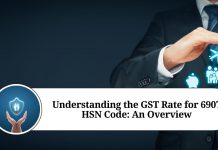HSN Code for Vegetables: Understanding the Harmonized System of Nomenclature
HSN codes, also known as Harmonized System of Nomenclature codes, are a standardized system used to classify goods and services for international trade. These codes are a critical aspect of the international trade system, as they allow countries to harmonize their customs and trade procedures. In India, HSN codes are used to classify goods for GST (Goods and Services Tax) purposes.
Vegetables are an essential commodity in India, and they are classified under the HSN code system. The HSN code for vegetables is 0701, which falls under Chapter 7 of the HSN code system. This chapter deals with edible vegetables, roots, and tubers.
The HSN code system consists of six digits, and each digit represents a different level of classification. The first two digits of the HSN code represent the chapter, while the next two digits represent the heading. The fifth and sixth digits represent the subheading and the product description, respectively.
The HSN code for vegetables falls under Chapter 7, which deals with edible vegetables, roots, and tubers. This chapter includes a wide range of vegetables, such as potatoes, onions, garlic, tomatoes, peppers, and many more. The HSN code for vegetables is further classified into several subheadings based on the type of vegetable and its preparation.
For example, the HSN code for potatoes is 0701 90 10, while the HSN code for onions is 0703 10 10. The HSN code for canned vegetables is 2002 90 20, while the HSN code for frozen vegetables is 0710 80 10. It is essential to use the correct HSN code when classifying vegetables for GST purposes to avoid any issues with customs and tax authorities.
Let’s take a closer look at some of the subheadings under the HSN code for vegetables. One of the most common subheadings is 0701 90, which includes a wide range of vegetables that have been prepared or preserved in various ways. For example, this subheading includes pickled vegetables, dried vegetables, and canned vegetables.
Another important subheading is 0710 80, which includes frozen vegetables. This subheading covers a wide range of frozen vegetables, including frozen peas, frozen corn, and frozen broccoli. It is important to note that different types of frozen vegetables may have different HSN codes, so it is essential to double-check the correct code for each product.
The HSN code for fresh vegetables can vary depending on the type of vegetable. For example, the HSN code for potatoes is 0701 90 10, while the HSN code for onions is 0703 10 10. It is important to use the correct HSN code for each type of vegetable to avoid any issues with customs and tax authorities.
In addition to the HSN code system, there are also specific regulations and guidelines for importing and exporting vegetables. For example, certain types of vegetables may require phytosanitary certificates to ensure that they are free from pests and diseases. It is important to research these regulations and guidelines before importing or exporting vegetables to avoid any potential issues.
Conclusion
Overall, understanding the HSN code system for vegetables is essential for businesses involved in international trade. By using the correct HSN code for each type of vegetable, businesses can ensure compliance with customs and tax authorities and avoid any unnecessary penalties. Additionally, it is important to research and comply with any specific regulations and guidelines for importing and exporting vegetables to avoid any issues.
Other Related Blogs: Section 144B Income Tax Act
Frequently Asked Questions (FAQs)
Q: What is an HSN code?
A: HSN stands for Harmonized System of Nomenclature, which is a standardized system used to classify goods and services for international trade. HSN codes consist of six digits that represent different levels of classification.
Q: What is the HSN code for vegetables?
A: The HSN code for vegetables is 0701, which falls under Chapter 7 of the HSN code system.
Q: What types of vegetables are included in the HSN code for vegetables?
A: The HSN code for vegetables includes a wide range of edible vegetables, roots, and tubers. This includes potatoes, onions, garlic, tomatoes, peppers, and many more.
Q: Are there different HSN codes for different types of vegetables?
A: Yes, there are different HSN codes for different types of vegetables. For example, the HSN code for potatoes is 0701 90 10, while the HSN code for onions is 0703 10 10.
Q: Why is it important to use the correct HSN code for vegetables?
A: Using the correct HSN code for vegetables is important for GST purposes, as it ensures compliance with customs and tax authorities. Using the wrong HSN code could result in unnecessary penalties or delays in customs clearance.
Q: Are there specific regulations and guidelines for importing and exporting vegetables?
A: Yes, there are specific regulations and guidelines for importing and exporting vegetables. For example, certain types of vegetables may require phytosanitary certificates to ensure they are free from pests and diseases. It is important to research and comply with these regulations and guidelines to avoid any issues.
Q: Can HSN codes for vegetables change over time?
A: Yes, HSN codes for vegetables, as well as other goods and services, can change over time as the international trade system evolves. It is important to stay up-to-date with any changes in the HSN code system to ensure compliance with customs and tax authorities.




















